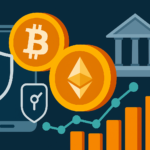As cryptocurrency adoption grows, so does the creativity of scammers. One of the latest tactics gaining traction is the use of crypto ATMs to defraud unsuspecting victims. These machines, which allow users to buy or send crypto, are now being exploited for fraudulent transactions under the disguise of convenience.
How the Scam Works
Crypto ATM scams usually follow a common pattern:
- The victim receives a fake phone call, text, or email claiming to be from a government agency, utility company, or bank.
- They are told they owe money and must pay immediately using a crypto ATM.
- The scammer provides a QR code or wallet address.
- The victim is instructed to go to a nearby crypto ATM and deposit cash.
- Once sent, the funds are irreversible and untraceable.
Some scammers even pose as tech support, convincing victims to withdraw money from their bank account and “secure it” through a crypto ATM.
Why It’s Effective
- Lack of awareness: Many people are unfamiliar with how crypto ATMs work or how crypto transactions cannot be reversed.
- Fear and urgency: Scammers create panic by impersonating authorities or claiming accounts will be frozen.
- Accessibility: With crypto ATMs popping up in gas stations and stores, scammers exploit their convenience.
Real-World Examples
- In the U.S., police departments across several states have issued warnings after dozens of residents lost thousands of dollars.
- Victims range from elderly individuals to young professionals, highlighting that no one is immune.
How to Protect Yourself
- Never send crypto to a wallet address from a cold call, email, or text.
- Verify with the actual organization through official contacts before taking any action.
- Report suspicious requests to local law enforcement or the FTC (U.S.) immediately.
- Educate friends and family, especially those less tech-savvy.
Final Thoughts
Crypto ATMs can be a legitimate tool for buying or sending cryptocurrency. But like all tools, they can be misused. Stay informed, stay skeptical, and don’t let fear or urgency guide your financial decisions.







